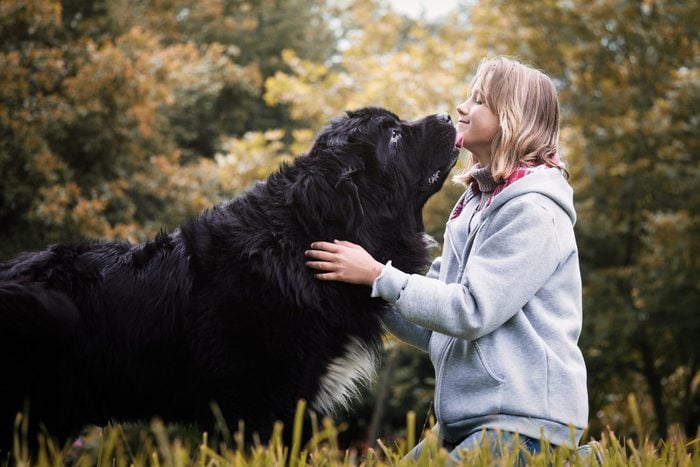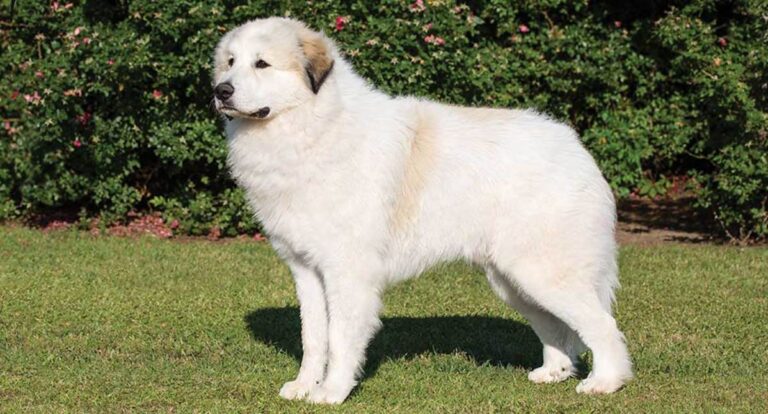Newfoundland dog vs. the Great Pyrenees, are both large breeds. However, while Newfoundlands are known for their swimming abilities and gentle temperament, great Pyrenees are known for their fierce loyalty and protective instincts.
Newfoundland dogs, also known as “Newfies,” are one of the largest dog breeds weighing up to 150 pounds. They have a thick, water-resistant coat and webbed feet, making them great swimmers. Newfies are known for their gentle, calm nature, making them great family pets.
Great Pyrenees, on the other hand, are large, muscular dogs that were bred as livestock guardians. They are fiercely loyal to their families and protective of their territory. Pyrenees have a thick, white coat that helps them blend in with sheep and goats when protecting them from predators. In this comparison, two unique breeds can meet the different needs of dog owners.

Credit: www.rd.com
History And Origin
The Newfoundland Dog and the Great Pyrenees both have an intriguing history. The Newfoundland originated from the Canadian province of Newfoundland. They were bred as working dogs and were used for tasks like retrieving fishing nets and rescuing drowning people. The great Pyrenees, on the other hand, have a history dating back centuries, existing within the mountainous regions of France and Spain.
They were also bred for work as livestock guardians. Despite their contrasting origin stories, these two breeds are similar in their purpose as working dogs. By comparing their history, we can see how these dogs were expertly bred to perform specific tasks.
Physical Characteristics
The Newfoundland dog is a large breed that can weigh up to 150 pounds and stand up to 28 inches tall at the shoulders. They have a thick, water-resistant double coat that can be black, brown, or gray. Their head is massive and their expression is soft and gentle.
The great Pyrenees is an equally large breed that can weigh up to 120 pounds and stand up to 32 inches tall at the shoulders. They have a thick, long white coat that is weather-resistant and they have a gentle, dignified expression.
When comparing the physical characteristics of these breeds, the Newfoundland is heavier and stockier while the Great Pyrenees is taller and more elegant. Both breeds have double coats, protecting cold climates.
Temperament And Personality
Newfoundland Dog vs. the Great Pyrenees are two large breed dogs with distinct personalities. The Newfoundland dog is a big, loyal, and loving animal that is often considered one of the sweetest dog breeds around. They are incredibly gentle and patient, making them perfect for families with young children.
The great Pyrenees, on the other hand, are known for their strong-willed personality, protectiveness, and independence. They were originally used as guardians of sheep, and their instincts toward protection are still evident today. When comparing the temperament and personality of these two breeds, it’s important to consider what you’re looking for in a dog.
If you want a friendly, affectionate pet, then Newfoundland is a great choice. If you’re looking for a fiercely loyal and protective companion, then the Great Pyrenees may be the better choice.
Training And Exercise
Newfoundland dogs and the Great Pyrenees are popular breeds for many reasons, and both require specific training and exercise routines. Newfoundland dogs are known for their water abilities and require daily outdoor exercise and swimming. They need mental and physical stimulation to remain active and happy, making training a crucial part of their routine.
Great Pyrenees, on the other hand, can be a little more relaxed, requiring moderate daily exercise and a calm, patient hand during training. The breed’s independent nature may make training more difficult but it’s crucial for their overall wellbeing. Comparing the two breeds’ exercise and training needs suggests that Newfoundland dogs need a higher level of physical activity, while great pyrenees should focus on mental stimulation. Effective training and exercise regimes for both breeds will lead to happy and healthy dogs.
FAQ On Newfoundland Dog vs. Great Pyrenees
How Big Do Newfoundland Dogs Get Compared To Great Pyrenees?
Newfoundlands and the Great Pyrenees are both large breeds, but Newfoundland dogs are usually heavier with an average weight of 100-150 pounds, while the Great Pyrenees have a weight range of 85-115 pounds. Both breeds can reach up to 27 inches in height at the shoulder.
What Is The Temperament Difference Between A Newfoundland And A Great Pyrenees?
Newfoundlands are known for their friendly and gentle nature. They are great with kids and make excellent family pets. The great Pyrenees are also affectionate, but they have a stronger protective instinct. They are generally wary of strangers and can be more independent than Newfoundlands.
Do Newfoundland Dogs vs. Great Pyrenees Have Different Exercise Needs?
Both Newfoundland dogs and Great Pyrenees are moderate to low-energy breeds. However, Newfoundlands tend to require more exercise than Great Pyrenees due to their heavy body and high levels of activity. Great Pyrenees are known to be more laid-back and can get by with a daily walk and regular playtime.
Conclusion
When deciding between a Newfoundland dog and the Great Pyrenees, it is important to consider your lifestyle and needs. The Newfoundland is a loyal and affectionate companion, suitable for families with children and spacious homes. On the other hand, the great Pyrenees is a protective and independent breed, better suited for experienced dog owners who can provide sufficient exercise and training.
Both breeds have their unique traits, and it ultimately comes down to personal preference and the owner’s ability to meet their needs. It is crucial to remember that owning a dog is a long-term commitment, and thorough research should be conducted before making a decision. By understanding the characteristics of each breed, you can provide a loving and suitable home for your furry friend.



